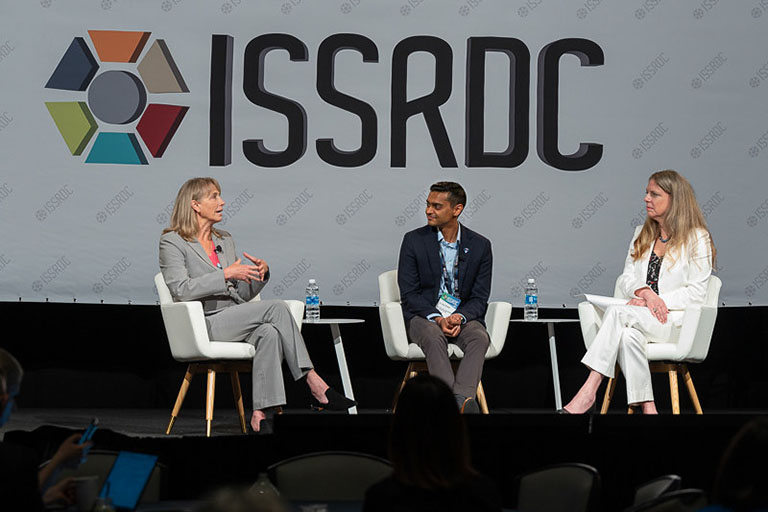Cardiovascular
BioServe Space Technologies Helps Advance Cardiovascular Research in Space
Heart disease claims the lives of nearly 18 million people around the globe each year. To help advance research that could lead to new ways to treat this deadly disease, scientists turned to the International Space Station (ISS) National Laboratory. Results from a 2016 investigation that focused on stem cell-derived heart cells in space were highlighted in a fireside chat at the 12th annual International Space Station Research and Development Conference (ISSRDC).
The talk featured Arun Sharma, an assistant professor at Cedars-Sinai Medical Center and one of the researchers who led the investigation, together with Stefanie Countryman, director of BioServe Technologies, a Colorado-based Biomedical Company and ISS National Lab Commercial Service Provider. During the session, they discussed the importance of this pioneering research and the role BioServe played in the investigation.
BioServe is one of several organizations that work with the ISS National Lab to help researchers translate ground-based research into flight-ready projects. As such, BioServe played a key role in developing specialized hardware for Sharma’s investigation that helped facilitate the team’s innovative approach to culturing stem cells in microgravity.
When his team started this project, Sharma said he didn’t know how to translate what he wanted to do into something that would work in space. BioServe helped with that, custom-designing pieces of hardware that enabled his team to achieve their scientific goals.
“The life sciences are our area of expertise,” said Countryman. “So, we always start with a conversation with our scientists to see what they want to accomplish.”
She explained that the company does a lot of testing with the science teams they work with to help ensure the experiments will work in space the way they want them to. “It’s really nerve-wracking sometimes,” she said. “It takes a lot of work to figure out all of the ins and outs of translating the science into successful spaceflight science.”
When the investigation flew to the ISS in 2016, it focused on the growth and function of stem-cell derived heart muscle cells, called cardiomyocytes. Rather than looking at the effects of spaceflight on the heart as a whole organ, this project examined heart function at the cellular level.
“The ISS is the ideal test bed for these types of investigations because microgravity causes changes in heart function similar to those seen in patients with cardiovascular disease on Earth, but at a much quicker rate,” Sharma said during the ISSRDC session. “This provides an accelerated model to study disease progression and test new drugs.”
Additionally, Sharma said that space-based studies using stem cell-derived heart cells have important regenerative medicine applications and could lead to new therapies to replace damaged heart tissue with healthy engineered tissue.
Results from the investigation, published in Stem Cell Reports, provided a better understanding of spaceflight-induced changes in the human heart and laid the foundation for more complex cardiovascular studies in low Earth orbit using engineered heart tissue.

“We saw what we call a compensatory effect in these cells, meaning [the cardiomyocytes] are able to compensate for the reduction in gravity by changing their genetics and by changing their contractility,” Sharma said during the fireside chat.
He explained that the cells were actually beating slower in space, and much to the surprise of the research team, the cells reverted back to normal when they returned to Earth. Sharma said that BioServe was able to supply the team with the hardware needed not only to carry out the experiment in orbit but also to help with returning the cells to Earth for postflight analysis.
“Thanks to BioServe for the assist with this,” he said. “It’s thanks to them we were able to bring back live tissue cultures from the space station to our lab in Stanford.”
Countryman also said that all the hard work is incredibly rewarding. “When you see the images, or in this case video of the beating heart cells, you know that everything is turning out the way you planned,” she said. “So, it’s really gratifying to see that happen.”
Sharma and Countryman agreed that this initial investigation helped pave the way for future experiments, including other stem cell projects that Sharma is currently working on. Countryman and BioServe have been an integral piece of spaceflight science more than 30 years, helping researchers like Sharma reach for the stars, and she says the work they do continues to inspire.
“I’ve been a part of more than 60 or 70 missions now, and this sense of pride and satisfaction when an experiment is successful, never really goes away,” Countryman said.

